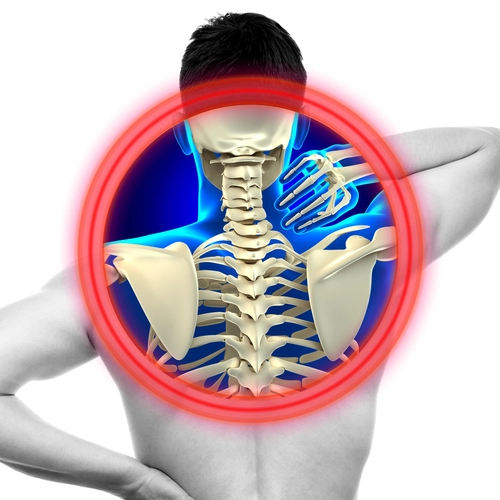Strabismus Claim Success Depends on Detailed Anatomy Understanding

How many muscles? Horizontal or vertical? The answers will keep your coding from getting crossed up.
When an ophthalmologist performs strabismus surgery, it can involve any combination of 12 extraocular muscles. Incorrectly identifying just one of those muscles can lead you to the wrong code -- and take more than $700 in reimbursement out of your practice's pocket.
But you don't need a PhD in anatomy to keep the eye muscles straight -- all you need are the answers to these frequently asked questions to guide you toward choosing the right code to report your practice's strabismus treatments.
Question 1: How do I pick the appropriate strabismus surgery code based on the ophthalmologist's operative notes?
Answer: A little knowledge of the eye's anatomy goes a long way toward understanding strabismus-correcting procedures. Which codes you report depends on the extraocular muscle or muscles the ophthalmologist operated on.
Each eye has six extraocular muscles that control the eyeball's movement and determine the eyeball's alignment, or in some cases misalignment. Strabismus surgery is the correction of misalignment with the potential restoration of quality visual activity.
CPT® distinguishes the strabismus surgery codes (67311-67318) by whether the procedure involves horizontal, vertical, or superior oblique muscles.
Horizontal: The eye's two horizontal muscles are the lateral rectus (LR) and medial rectus (MR) muscles. (The MR muscle in either eye is the one closest to the nose.) If the ophthalmologist recesses (weakens) or resects (strengthens) these muscles, report 67311 (Strabismus surgery, recession or resection procedure; one horizontal muscle) or 67312 (... two horizontal muscles), depending on the number of muscles.
Vertical: The vertical muscles are the superior rectus (SR) and inferior rectus (IR) muscles. (The SR muscle is closer to the top of the head.) If the ophthalmologist recesses or resects these muscles, report 67314 (...one vertical muscle [excluding superior oblique]) or 67316 (...two or more vertical muscles [excluding superior oblique]), depending on the number of muscles.
CPT® also considers the inferior oblique (IO) muscle -- but not the superior oblique (SO) muscle -- a vertical muscle. Report 67314-67316 for recession or resection of the inferior oblique muscles.
Superior oblique: The SO muscle wraps around the top of the eyeball. Report 67318 (Strabismus surgery, any procedure, superior oblique muscle) for procedures performed on the SO muscle.
Question 2: Is strabismus surgery considered unilateral or bilateral?
Answer: The strabismus surgery codes (67311-67318) are inherently unilateral, describing procedures performed in one eye only. When codes mention more than one muscle (e.g., 67312, Strabismus surgery, recession or resection procedures; two horizontal muscles), CPT® is implying that those muscles are in the same eye. Therefore, if the surgeon resects one horizontal muscle in each eye, 67312 would not be correct. In that scenario, report 67311 (Strabismus surgery, recession or resection procedure; one horizontal muscle) bilaterally.
Payer preferences vary on the usage of modifiers 50 (Bilateral procedure). Most Medicare carrier payers prefer that you list the code once with the bilateral modifier appended (e.g., 67311-50. Just, the same, some payers would want you to list the procedures twice and append modifier 50 (e.g., 67311, 67311-50).
Medicare usually reimburses for 67311-50 based on 150 percent of the fee schedule amount for a single code. The 2011 fee schedule assigns 17.16 national unadjusted facility RVUs to 67311, which yields $583.04 when multiplied by the 33.9764 conversion factor. Code 67311-50 should reimburse $874.56, 150 percent of $583.04.
However, if the ophthalmologist recesses both the lateral rectus and medial rectus muscles of the left eye, you are not coding a bilateral procedure. This is a case in which 67312 would be appropriate. CMS would reimburse this at $705.35 (20.76 RVUs x 33.9764, unadjusted for geographic location).
Hidden trap: The same rules apply to the vertical muscle codes, although the wording "two or more vertical muscles" in the definition of 67316 may lead you to think it's a bilateral code, since there are technically only two vertical muscles in one eye.
Remember, however, that CPT® considers the inferior oblique muscle a vertical muscle for coding purposes -- so the ophthalmologist could resect "two or more vertical muscles" in one eye if he operates on the SR, IR, and IO muscles.
Watch out: The bilateral status is different for the six strabismus add-on codes. CMS assigns them a bilateral status of "0," meaning that the 150 percent payment adjustment for bilateral procedures does not apply. You cannot use modifiers LT/RT (Left side/Right side) or 50 with these codes:
Question 3: Are MRIs covered for strabismus diagnoses?
Answer: Carriers' policies vary on coverage for magnetic resonance imaging (MRI). Most Medicare carriers are of the opinion that not all patients with the diagnosis of strabismus (378.50-378.63) require an MRI. Paralytic strabismus (378.50-378.56), mechanical strabismus (378.60-378.63), and Duane's syndrome (378.71) are three conditions for which many payers cover MRIs.
Pay close attention to the MRI code definitions when choosing the MRI code to correspond to the diagnosis of strabismus. MRI codes are organized according to the area of the body examined. The strabismus-related MRI codes for the orbit, face and neck include:
Question 4: How should I code for Botox injections to treat strabismus?
Answer: Report 67345 (Chemodenervation of extraocular muscle). That code describes the injection of botulinum toxin (trade name Botox) into the affected muscle, preventing it from contracting and allowing the opposing muscle to bring the eye into the correct position. Remember to use J0585 (Injection, onabotulinumtoxina, 1 unit) for the drug (Botox) and indicate the number of units used, including any wastage.

